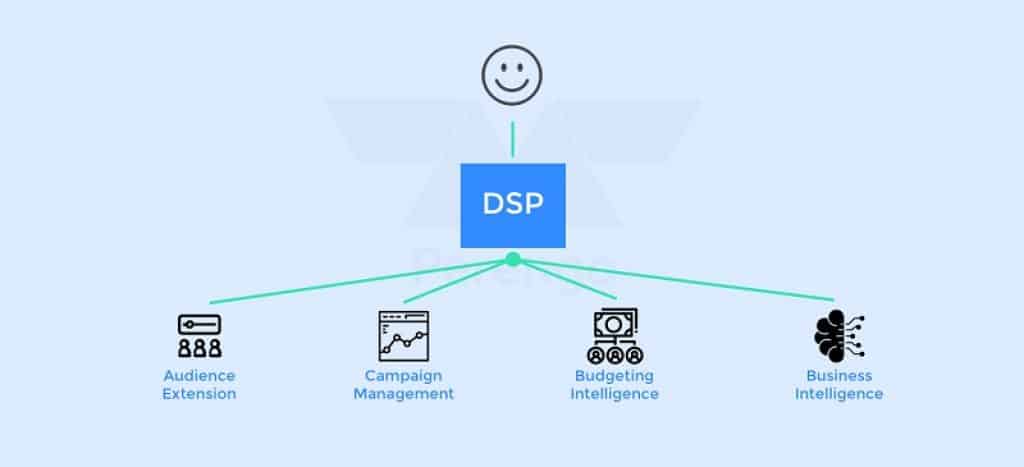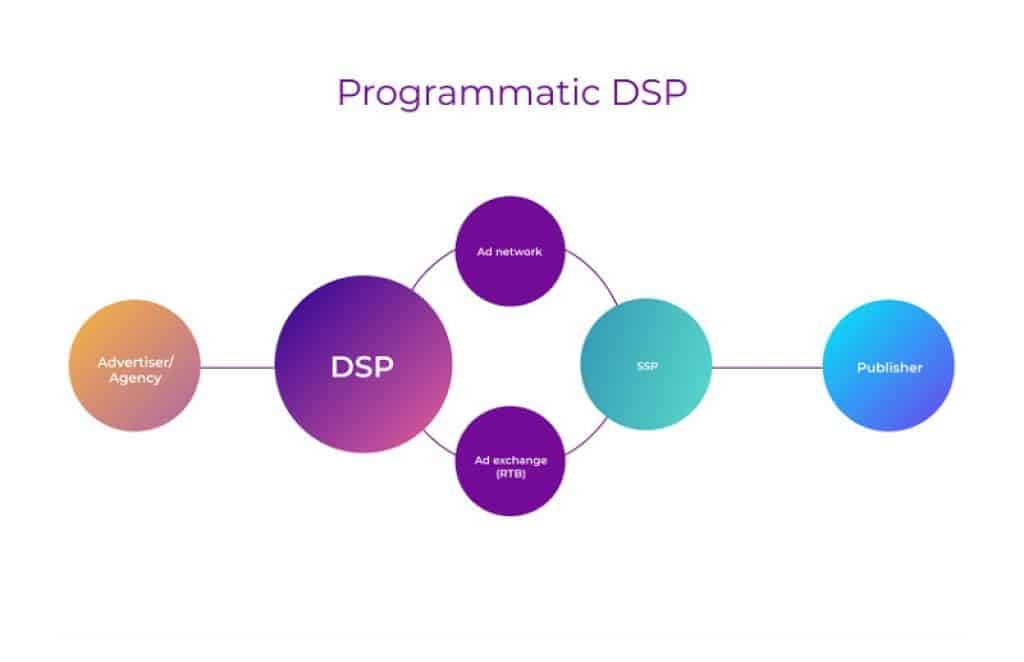
Demand Side Platform or a DSP is a tool that allows purchasing ads online automatically without direct interaction with publishers. The main goal of such a platform is to optimize costs and get the maximum number of views from the appropriate audience.
The DSP helps to save the budget of advertising campaigns and at the same time sets up very accurate targeting. The platform exchanges information with other resources that provide information about advertising opportunities on websites, apps, videos, and various other media.
In this article, we will talk more about DSP, some of its main characteristics, and the most important features.
How Demand Side Platform Works

The DSP aims to buy target audience traffic, not just the advertising post. Such an approach allows users to target the right viewer. Being connected to the virtual exchange, DSP analyzes offers of advertising space and selects the most relevant option which corresponds to the needs of the advertiser.
Moreover, the platform allows to perform all operations with ad campaigns in one place: launching, optimization, and results tracking.
DSP removes such responsibilities from advertising managers as approval of bids for ad impressions and coordination of requirements for ad space. These actions are automated on the DSP platform, allowing professionals to spend more time analyzing ad effectiveness and making adjustments.
DSP in Programmatic Buying

DSP is part of a larger framework called Programmatic buying. The process of buying ads there includes the following steps:
Step 1
The audience visits the website or the extension and leaves their data in the form of cookies.
Step 2
This data is sent to SSP (Supply Side Platform). It generates the starting rate (the minimum amount of money that publisher asked for 1,000 displays).
Step 3
SSP comes to DSP with the desired bid from the user. By this time, the Agency Trading Desk has already configured the campaign parameters in DSP on behalf of the brands: added advertisements, limitations of display frequency, set the daily budget, and the desired price per thousand displays.
Step 4
The auction begins. DSP evaluates the cost per impression composed from the order and budget and sends the bid to the Ad Exchange.
Step 5
Ad Exchange processes the bids received from DSP. As with any auction, the highest bid will be awarded. The final announcement is sent to the winning bidder and the ad is shown to the target audience.
DSPs receive requests to buy ad impressions from all SSPs. If the display is potentially interesting, the additional data is purchased from DMP (data management platform). Based on all of this data DSP makes a decision: whether to buy an ad display or not.
As you can see, Programmatic buying is not an easy process. However, all of the actions are performed automatically so you don't need to do anything manually to get the ad. Special software will finish all of the tasks in just a few seconds.
DSP Working Strategies

All of the DSPs work with different advertisers that launch several campaigns. Each campaign has a separate strategy for buying ad impressions, consisting of a set of targeting methods. Here are some of the main options:
- Targeting by a list of websites
- Targeting by geography
- Targeting by frequency of impressions
- Retargeting
- Targeting by Audience Segments
How To Choose The Best DSP?

In order to select the best DSP, it is necessary to spend some time and understand the functionality of demand side platforms. Then you can take a look at the specific characteristics which help to draw conclusions about the quality of the platform. Here are some of the most important things you should definitely check before creating your DSP account.
- Each advertiser should have access to the full functionality of the DSP when setting up campaigns independently.
- All prices, commissions, and terms should be as transparent and open as possible.
- No changes to the ad campaign should take place without notifying the advertiser.
- DSP must not receive any commissions from the publisher sites in order to maintain objectivity.
- The platform must not connect to the ad network, as it should remain independent and unbiased.
Pros of Working With DSP

1. Smooth And Accurate Targeting
DSP is the way of advertising that finds the right people at the right time. Targeting is accurate and flexible due to demographic data, IP zoning, keywords, and other available parameters.
2. Ability To Reach a Wider Audience
About 3.5 billion people around the world are connected to the Internet. With its focus on displaying ads to the relevant audience and flexible targeting, DSP is able to reach each of them.
3. Budget Optimization
Of course, precise targeting and budget tuning can save thousands of dollars even on a single campaign.
4. Time Management
You do not need to constantly negotiate with advertisers while working with DSP, the platform automates this process. Therefore, you can evaluate the effectiveness of the advertising campaign before its completion and make changes if needed.
Conclusion
Demand Side Platform is an automated system that allows a media buyer to purchase spots at multiple advertising markets, manage several accounts and numerous campaigns from a single interface.
Automatic purchase of advertising spots is a handy tool that saves time and makes the process of ad placement more transparent. However, it can be hard to use this instrument without basic knowledge of marketing. In order to get results from your campaign, you need to research your target audience, understand how targeted advertising works, and learn how to create ads that grab the attention of users.










